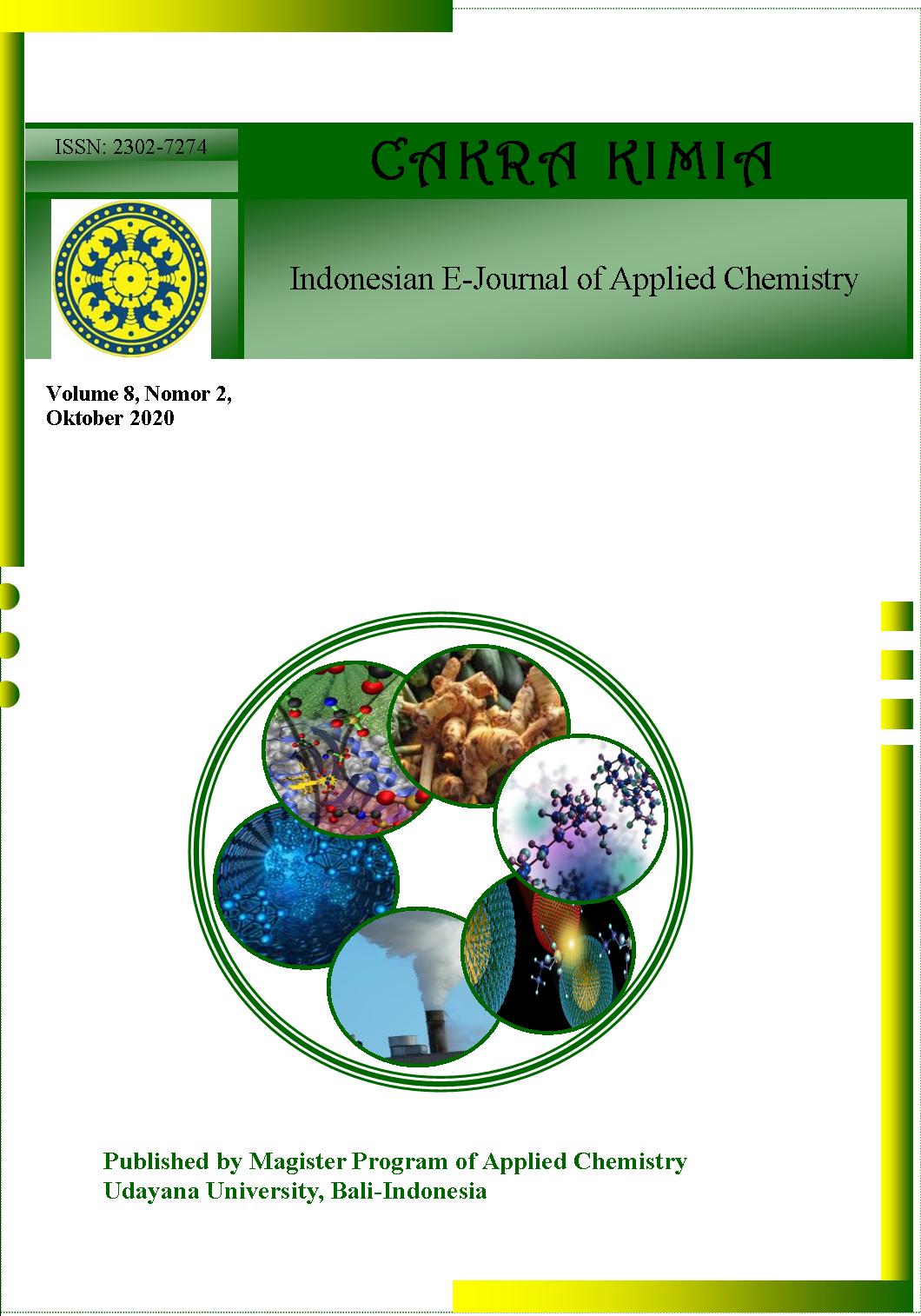PENETAPAN KADAR PARASETAMOL DAN KAFEIN DENGAN METODE HIGH PERFORMANCE LIQUID CHROMATOGRAPHY (HPLC)
Abstract
ABSTRAK: Parasetamol dan kafein menjadi kombinasi dalam persediaan obat untuk dapat memberikan efek analgetik. Penggunaan ini menjadi semakin meningkat untuk dapat mencapai efek yang baik dalam pengawasan zat aktif dalam formulasi farmasetik. Penelitian ini bertujuan untuk dapat melakukan preparasi untuk sediaan tablet dengan kandungan parasetamol dan kafein. Desain penelitian adalah eksperimental menggunakan metode HPLC dengan detektor dan direkam dalam bentuk kromatogram dengan kolom reversed phase C18 dengan ukuran 4.6 mm x 10 cm. Temperatur kolom 45 ± 1 oC dan fase gerak melalui membran filter dengan kecepatan 2 mL/menit dengan detector UV 275 nm. Pada penelitian ini dilakukan uji kesesuaian sistem serta penentuan presisi dan akurasi metode analisis. Hasil penelitian ini menunjukkan bahwa uji kesesuaian sistem memenuhi syarat dengan deviasi relatif (RSD). Berdasarkan metode yang dilakukan terdapat validasi metode presisi, akurasi, linieritas, LOD dan LOQ diterima. Nilai RSD larutan uji parasetamol dan kafein berturut-turut adalah 0,4437% dan 2,8959%. Untuk validasi presisi diperoleh rata-rata % recovery larutan uji parasetamol dan kafein berturut-turut adalah 100,01758% dan 97,42951907%. Nilai LOD dan LOQ diperoleh berturut-turut adalah sebesar 26.74885159 ng/10µL dan 89,162838 ng/10µL. Kadar larutan sampel parasetamol 998,226 ng/10µL. Dengan demikian, karena kadar sampel parasetamol melebihi nilai batas deteksi sehingga sampel parasetamol dapat dideteksi namun tidak dapat dikuantifikasi.
ABSTRACT: Paracetamol and caffeine become a combination of drug supplies to provide analgesic effects. This use is increasingly being used to achieve a good effect on the control of active substances in pharmaceutical formulations. This study aims to be able to acurately prepare tablets containing paracetamol and caffeine. The research design was experimental using the HPLC method with a detector with a 4.6 mm x 10 cm long packing column C18. The temperature of the reversed-phase column was 45 ± 1 oC and the moving phase through the filter membrane at a rate of 2 mL/minute with a 275 nm UV detector. In this study, the system suitability test was carried out by determining the precision and accuracy of the analytical method. The results of this study indicate that the system suitability test meets the requirements with relative deviation (RSD). Based on the method used, there are validation methods for precision, accuracy, linearity, LOD, and LOQ are accepted. The RSD value of the paracetamol and caffein test solutions were 0.4437% and 2.8959%, respectively. For precision validation, the average % recovery for the paracetamol test solution was 100.01758% and the average% recovery for the caffeine test solution was 97.43%. Then, for the validation of the method, the LOD and LOQ were 26.7489 ng / 10µL and 89.1628 ng / 10µL respectively.The paracetamol concentration of sample solution was 998.226 ng / 10µL. Since the paracetamol sample level exceeds the detection limit value so that the paracetamol sample can be detected but can not be quantified.
Downloads
References
[2] Weston, A., and R.P. Brown.1997.HPLC and CE Principles and Practic. USA : Academic Press.
[3] Convention, U.S.P.2009.USP 32 NF 32 :United States Pharmacopeia and National Formulary.Vol.2.Rockville :United States Pharmacopeial Convention.
[4] Basset, J., R. C. Denney, G. H. Jeffery, J. Mendham. 1994. Buku Ajar Vogel: Kimia Analisis Kuantitatif Anorganik. Jakarta: Buku Kedokteran EGC.
[5] Goicoechae, H. C. and Olivieri, A. C. 1999. Simultaneous multivariale spectrophoto- metric analysis of parasetamol and minor components (Diphenhydramine or Phenyl- propanolamine) in tablet preparation. Journal of Pharmaceutical and Biomedical Analysis. 20:255-261.
[6] Kuwana, 1980. Physical Methods in Modern Chemical Analysis. 13. New York: Academic Press.
[7] Svehla, G. 1985. Analisis Kualitatif Makro dan Semimakro. Edisi V. Jakarta: Kalman Media Pusaka.
[8] Skoog, D.A., West, D.M, Holler, F.J. 1994. Analytical Chemistry : An Introduction. 6th edition. 490. Florida: Harcourt Brace College Publishers.
[9] Watson, 1999, Pharmaceutical Analysis, 98, 238, Churchill Livingstone, London.
[10] Kemenkes RI. 2014. Farmakope Indonesia. Edisi V. Jakarta : Kementrian Kesehatan Republik Indonesia.
[11] Hendayana, Sumar.2006.Kimia Pemisahan Metode Kromatografi dan Elektroforesis Modern. Bandung : Remaja Rosdakarya Offset.
[12] Day, R. A. dan A. L. Underwood. 1980. Analisa Kimia Kuantitatif. Jakarta: Penerbit Erlangga.



 Petunjuk Penulisan
Petunjuk Penulisan
